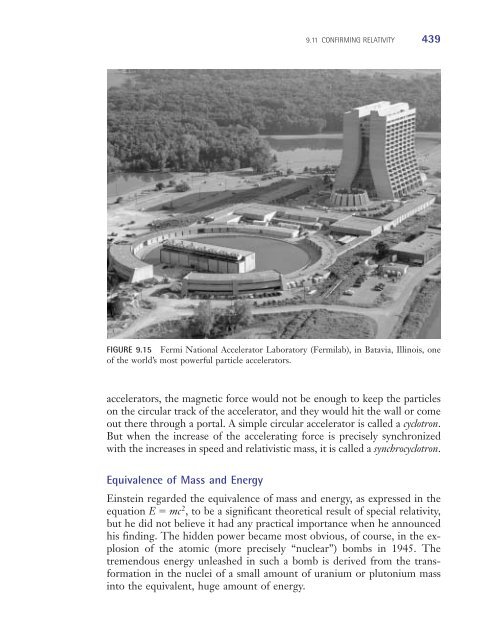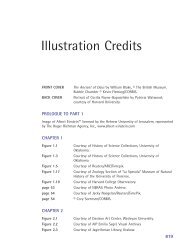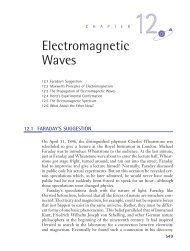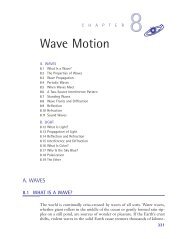Chapter 9: Einstein and Relativity Theory (319 KB) - D Cassidy Books
Chapter 9: Einstein and Relativity Theory (319 KB) - D Cassidy Books
Chapter 9: Einstein and Relativity Theory (319 KB) - D Cassidy Books
You also want an ePaper? Increase the reach of your titles
YUMPU automatically turns print PDFs into web optimized ePapers that Google loves.
3637_<strong>Cassidy</strong>TX_09 6/14/02 12:09 PM Page 439<br />
9.11 CONFIRMING RELATIVITY 439<br />
FIGURE 9.15 Fermi National Accelerator Laboratory (Fermilab), in Batavia, Illinois, one<br />
of the world’s most powerful particle accelerators.<br />
accelerators, the magnetic force would not be enough to keep the particles<br />
on the circular track of the accelerator, <strong>and</strong> they would hit the wall or come<br />
out there through a portal. A simple circular accelerator is called a cyclotron.<br />
But when the increase of the accelerating force is precisely synchronized<br />
with the increases in speed <strong>and</strong> relativistic mass, it is called a synchrocyclotron.<br />
Equivalence of Mass <strong>and</strong> Energy<br />
<strong>Einstein</strong> regarded the equivalence of mass <strong>and</strong> energy, as expressed in the<br />
equation E mc 2 , to be a significant theoretical result of special relativity,<br />
but he did not believe it had any practical importance when he announced<br />
his finding. The hidden power became most obvious, of course, in the explosion<br />
of the atomic (more precisely “nuclear”) bombs in 1945. The<br />
tremendous energy unleashed in such a bomb is derived from the transformation<br />
in the nuclei of a small amount of uranium or plutonium mass<br />
into the equivalent, huge amount of energy.






